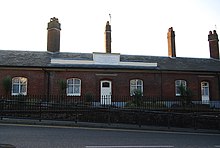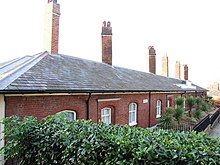
Strood is a town in the unitary authority of Medway in Kent, South East England. The town forms a conurbation with neighbouring towns Chatham, Rochester, Gillingham and Rainham. It lies on the northwest bank of the River Medway at its lowest bridging point.
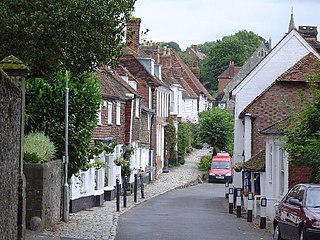
Sutton Valence is a village about five miles (8 km) SE of Maidstone, Kent, England on the A274 road going south to Headcorn and Tenterden. It is on the Greensand Ridge overlooking the Vale of Kent and Weald. St Mary's Church is on the west side of the village on Chart Road, close to the junction of the High Street with the A274. Another landmark is Sutton Valence Castle on the east side of the village, of which only the ruins of the 12th-century keep remain, under the ownership of English Heritage.

Sackville College is a Jacobean almshouse in town of East Grinstead, West Sussex, England.

Sherburn Hospital is a medieval hospital located in the hamlet of Sherburn House to the southeast of Durham, England.

The College of God's Gift, often referred to as the Old (Dulwich) College, was a historic charity founded in 1619 by the Elizabethan actor and businessman Edward Alleyn who endowed it with the ancient Manor of Dulwich in south London. In 1857 it was renamed as Alleyn's College of God's Gift. The charity was reorganised in 1882 and again in 1995, when its varied component activities were split up into separate registered charities. The former constituent elements of College of God's Gift, which have been independent charities since 1995, are:
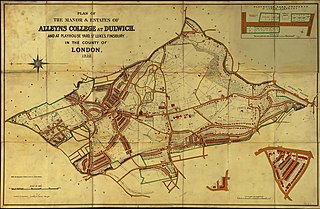
The Dulwich Estate, previously the Estates Governors of Alleyn's College of God's Gift at Dulwich, is a registered charity in England, one of the successors to the historic charity Edward Alleyn's College of God's Gift that was founded in 1619. It owns the freehold of around 1,500 acres (6.1 km2) in Dulwich, South London, including a number of private roads and a tollgate. The estate properties range from Regency and 19th century buildings to distinguished modernist 1960s buildings.

Richard Watts (1529–1579) was a successful businessman and MP for Rochester, South East England, in the 1570s. He supplied rations for the English Navy as deputy victualler and supervised the construction of Upnor Castle. After Queen Elizabeth I pronounced his house was satis after a visit in 1573, the house was thereafter known as Satis House. Famed locally for his philanthropy, he died on 10 September 1579, leaving money in his will to establish the Richard Watts Charity and Six Poor Travellers House in Rochester High Street. He is buried, in accordance with his will, in Rochester Cathedral.

St. Catherine's Priory was an important early Dominican friary, located in Ribe, Denmark from 1228 until 1536. The buildings still stand, although there is no monastic community there. Known as Ribe Kloster, it is Denmark's most complete extant monastic building complex.
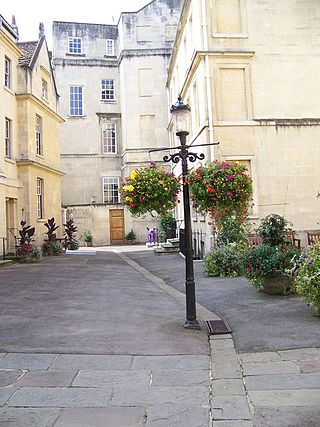
St John's Foundation was founded as St John's Hospital in Bath, Somerset, England, in 1174, by Bishop Reginald Fitz Jocelin and is among the oldest almshouses in England. The current building was erected in 1716 and has been designated as a Grade I listed building.

The Tollemache Almshouses, also known as the Wilbraham Almshouses or Wilbraham's Almshouses, are six former almshouses in Nantwich, Cheshire, England. They are in two blocks of three cottages each, located on the north side of Welsh Row at numbers 118–128. The present buildings, which are listed at grade II, were erected in 1870 by John Tollemache to replace adjacent almshouses founded by Sir Roger Wilbraham in 1613. The almshouses were modernised in 1980 and remain in residential use. The Hospital of St Lawrence, a medieval house for lepers, was possibly on or near the site of the present almshouses.

Rochester is a town and former city in Kent, England. It is located at the lowest bridging point of the River Medway about 30 miles (48 km) from London. The town's location is due to the bridge which carries the Roman Watling Street over the river.

St. Bartholomew's Hospital, Rochester was founded in 1078 for the care of the poor and lepers. It survived as a charity until taken over with the founding of the National Health Service. The hospital closed permanently in September 2016.
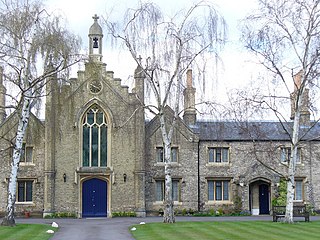
Hickey's Almshouses are almshouses between Sheen Road and St Mary's Grove in Richmond, London.

The Powis Almshouses are a block of almshouses in Chepstow, Monmouthshire, Wales, at the junction of Church Street and Bridge Street. The building dates from about 1721, and was constructed as a result of a bequest from Thomas Powis, a vintner who was probably born in the town. The almshouse is a Grade II* listed building.
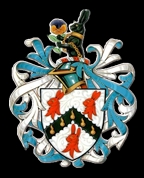
Richard Watts Charities incorporate Richard Watts Charity set up in the will of Richard Watts in 1579, as well as several other charities in Rochester, Medway. The will originally provided for an almshouse in Rochester High Street: The Poor Travellers House; over time, the money later provided for almshouses in Maidstone Road, along with other accommodation in Rochester, totalling 66 self-contained flats. Other charities absorbed by the Richard Watts Charity include St Catherine's Hospital founded under the Charity of Symond Potyn in 1315.

Hospitals in medieval Scotland can be dated back to the 12th century. From c. 1144 to about 1650 many hospitals, bedehouses and maisons Dieu were built in Scotland.

God's House Hospital, also known as the Hospital of St. Julian or Domus Dei is a refuge for poor travellers in Southampton, England. Much of the complex has now been destroyed, with only four buildings remaining: the gatehouse, God's House Tower, a grade I listed scheduled ancient monument; and the chapel, St. Julien's Church, a grade I listed building; and two accommodation blocks dating from the 19th century.

The Hospital Chapel of St Mary the Virgin and St Thomas of Canterbury, Ilford, also known as Ilford Hospital Chapel is on Ilford Hill in Ilford. It is an ancient charitable foundation dating from about 1140, and is the oldest building in the London Borough of Redbridge. Since 1954 it has been protected as a Grade II* listed building under UK legislation.

The French Hospital was founded in 1718 in Finsbury on behalf of poor French Protestants and their descendants residing in Great Britain. In the 1860s it moved into the spectacular purpose-built hospital designed by Robert Lewis Roumieu in Victoria Park, Hackney, and then in the 1940s moved out of London to Compton's Lea, Horsham, West Sussex. Since 1959 it has been located in Rochester, Kent and today provides almshouse accommodation for Huguenot descendants.
